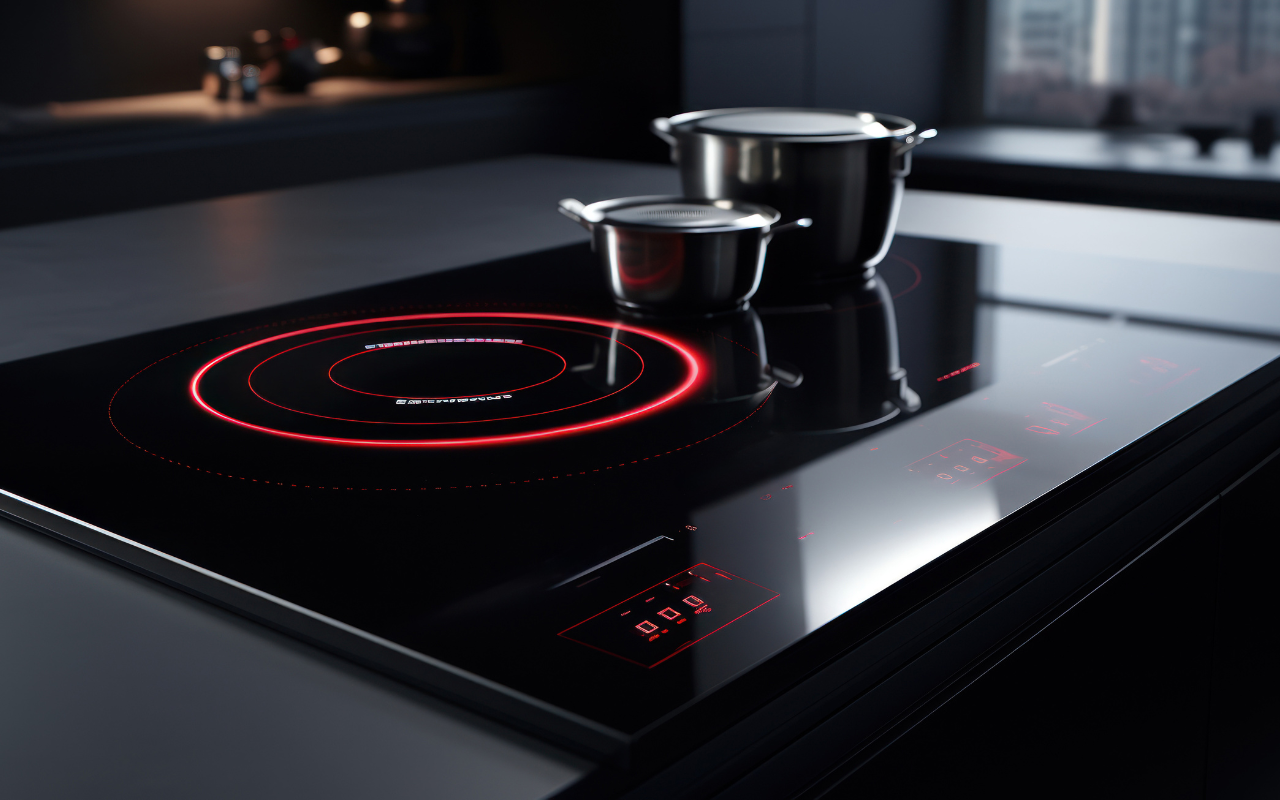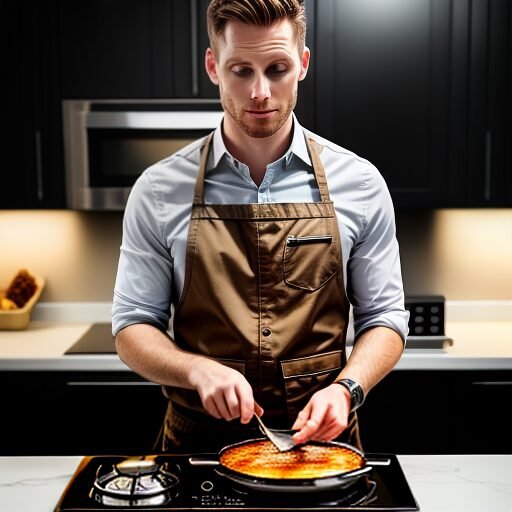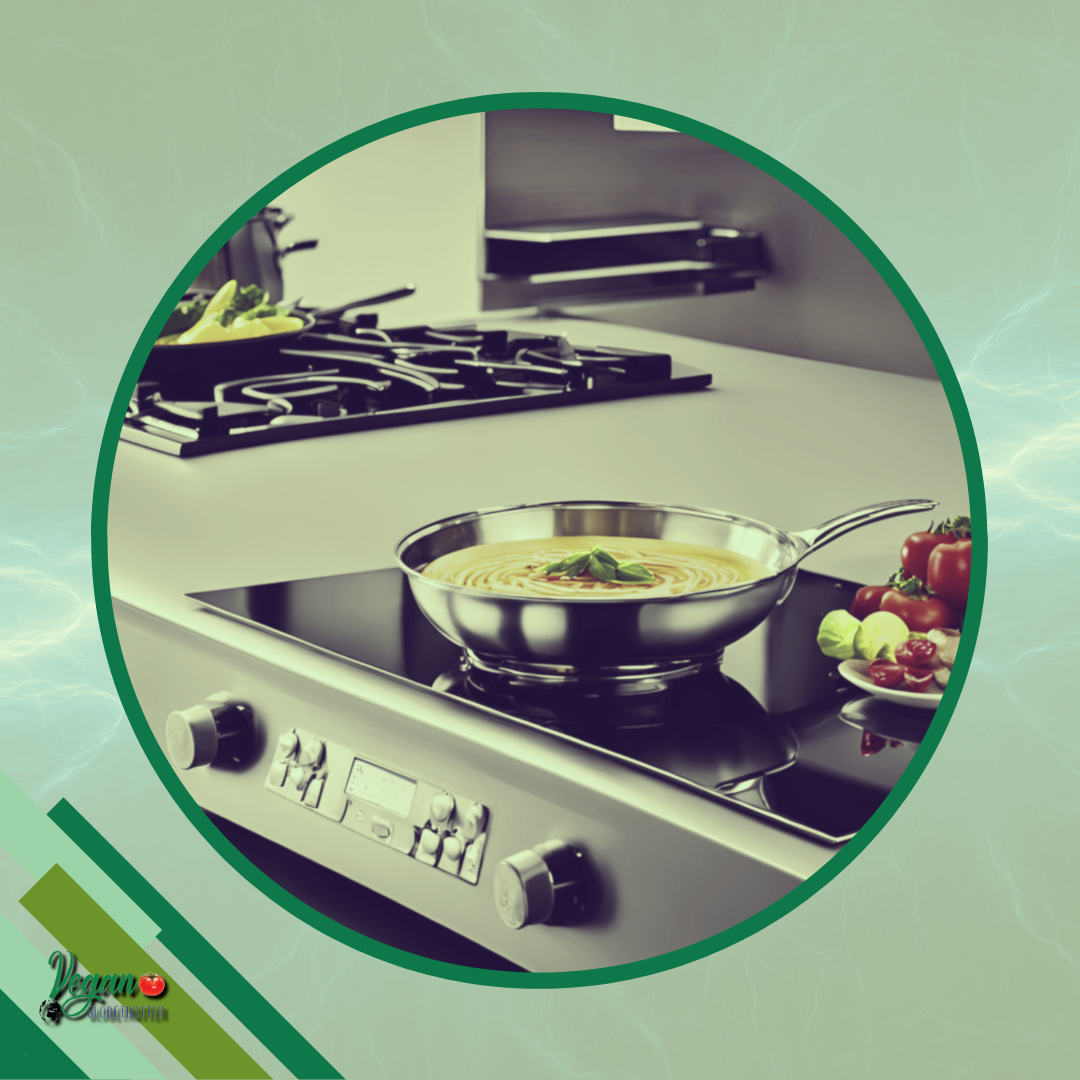Vegan Globetrotter is supported by our audience. When you purchase through one of our links, we may earn a small affiliate commission. As an Amazon Associate I earn from qualifying purchases. Your cost is not affected.
==================
Induction technology is an innovation that’s transforming the way we cook, promising to reduce our energy bills and minimize our carbon footprint. In a world increasingly conscious of its environmental footprint, every corner of our homes is being reimagined for greater sustainability, and the kitchen is no exception. Imagine a cooking experience that’s faster, safer, and significantly more energy-efficient. Whether you’re a culinary enthusiast or someone seeking to make eco-friendly choices, this article unveils how induction technology is poised to revolutionize your kitchen, blending cutting-edge science with everyday practicality. Read on to discover the future of cooking.
The Future of Energy-Efficient Kitchens: Induction Technology’s Role in Modern Cooking

The future of cooking is moving quickly towards energy-efficient solutions, and induction technology is at the forefront. Unlike traditional gas and electric stoves, induction cooktops heat your pots and pans directly using magnetic induction. This means they’re more efficient and offer better control over your cooking.
Induction stoves minimize heat loss and ensure faster, more precise cooking. Their growing popularity shows a shift towards sustainable and cost-effective cooking methods. As we become more conscious of how our daily actions affect the environment, the kitchen stands out as a crucial area where we can make eco-friendly choices. Induction technology cuts down on energy use and makes cooking safer.
Key Takeaways
- Induction cooking heats your cookware directly using electromagnetic energy rather than relying on a flame or traditional electric heating elements.
- There are many advantages to using induction cooking, from energy efficiency gains to safety and convenience features.
- Switching to energy-efficient technologies in your kitchen makes a difference for the planet, whether reducing your carbon footprint or focusing on sustainable kitchen design.
- When you’re thinking about getting an induction cooktop for your kitchen, weighing the initial cost against the energy and potential long-term savings is important.
- Induction cooking is advancing rapidly, becoming more efficient and easier to use. These improvements are leading the charge for the future of energy-efficient kitchens.

The Evolution of Kitchen Appliances: From Fire to Induction
Let’s dive into the exciting journey from traditional cooking methods to advanced energy-efficient technologies and see how these innovations have completely transformed our kitchens.
From Traditional Cooktops to Induction
The kitchen has always been the heart of the home, a place where culinary practices reflect technological progress. As you transitioned from open fires to traditional cooktops such as gas and electric stoves, the focus on convenience and control became paramount.
However, induction cooktops are now leading the charge in kitchen technology, employing electromagnetism to heat cookware directly, resulting in faster cooking times and improved safety due to the cooktop staying cool to the touch.
Historical Advances in Energy Efficiency
Kitchen appliances have come a long way in terms of energy efficiency. The refrigerator, for instance, was a game-changer when safer refrigerants like Freon were introduced in the 1920s, significantly reducing energy consumption over time. Today, the rise of smart technology in kitchen appliances continues this trend by optimizing energy use and providing enhanced control, reducing your carbon footprint.
Understanding Induction Technology: The Future of Cooking

Let’s kick off your journey into the efficient world of induction cooking by breaking down what it is and how it works.

Understanding the Science of Induction
Induction cooking heats your pots and pans directly using electromagnetic energy rather than using a flame or traditional electric heating element.
Here’s how it works: Underneath the cooktop surface, there’s a copper coil. When you flip on the induction element, an electric current starts flowing through this coil, which generates a magnetic field that gets things cooking.
When you place a ferromagnetic or iron-based pan on top, this magnetic field induces an electric current directly into the pan, heating it quickly and efficiently.
Components and Design
Induction cooktops are designed to maximize energy transfer to your cookware and food, making them incredibly efficient. Let’s break down the key components:
- Glass-ceramic Surface: This sleek, smooth surface houses the induction coils and creates an easy-to-clean cooking area.
- Induction Coils: Hidden beneath the cooking surface, these copper coils generate the magnetic field that heats your cookware.
- Control System: This offers precision control over power levels, allowing you to adjust cooking temperatures instantly and accurately.
Did You Know?
Induction cooktops generally have a higher price tag than traditional electric or gas cooktops.
Unveiling the Advantages of Induction Cooking
Here are the advantages of using induction cooking:

Energy Efficiency Gains
Induction cooktops are super energy-efficient. Here’s why: Instead of heating up the air around your pan like regular electric or gas stoves, they use a magnetic field to heat the pan directly. This saves a ton of energy, lowers your utility bills, and helps out the environment. Induction cooktops have earned Energy Star recognition for their low energy consumption.
Improved Cooking Precision
You’ll discover that your ability to control cooking temperatures is markedly improved with induction cooking. This precision allows for consistent and predictable heating, which is pivotal for delicate foods.
Safety and Convenience Features
Induction cooktops enhance kitchen safety with features such as auto-shutoff when no pan is present and surfaces that remain cool to the touch everywhere except under the cooking pot.
Moreover, induction units are easier to clean due to their flat surfaces and the cooking area staying relatively cool, preventing food from baking on the cooktop.
Here’s a video about the pros and cons of induction technology.
By: Boulevard Home
Induction Technology: Environmental Impact

Adopting energy-efficient technologies in your kitchen can significantly impact the planet. Induction cooktops are at the forefront of driving this change.
Reducing Carbon Footprint
Your choice of induction cooktops can have a direct effect on reducing greenhouse gas emissions. Unlike traditional gas or electric ranges, induction cooking uses electricity and can be powered by renewable energy sources. This transition is essential as many regions phase out natural gas in favor of electricity for environmental concerns.
Sustainability in Kitchen Design
Incorporating induction technology is a step toward a stainable kitchen design. When you opt for energy-efficient appliances such as induction cooktops, you save on your energy bills and play a part in building a more sustainable future.
Products showcased at recent events like CES 2024 highlight the public demand for sustainable kitchen products, which are designed to last longer and place a lower burden on the environment.
The Economic Benefits of Induction Technology
When considering induction cooktops for your kitchen, it’s important to balance the initial investment against the energy savings and potential cost reductions over time.

Cost-Benefit Analysis
Purchasing an induction cooktop involves a higher upfront cost than traditional gas or electric stoves. The price varies based on the model and features, but the precise energy transfer of induction cooktops offers higher efficiency rates.
Long-Term Savings
Induction cooktops can lead to substantial energy savings over time. The faster cooking times and precise heat control translate into less wasted energy, which can result in lower utility bills.
Advancements in Induction Technology

Induction cooking is evolving fast, making it more efficient and user-friendly. These advancements are paving the way for the future of energy-efficient kitchens.
Innovations on the Horizon
Recent advances have stepped things up. Now, induction cooktops manage power better, saving electricity while giving you more control over your cooking. And get this—zoneless cooktops mean you can place your pots and pans wherever you want on the surface, and they’ll heat up evenly. No more being tied down to specific burner sizes!
These units can even sense the size and shape of your cookware automatically, adjusting the heat accordingly. It’s like having an intelligent kitchen assistant right on your countertop. And get this—some of these units do double duty as wireless charging spots for your gadgets. How cool is that? Plus, they’re getting more portable, perfect for outdoor cooking or if you’re tight on kitchen space.
Integration with Smart Home Systems
Induction technology seamlessly integrates with smart home systems, giving you unprecedented control over your cooking experience. With your smartphone or voice-controlled devices, you can remotely monitor and adjust cooktop settings, ensuring precise temperature control and safety.
Intelligent features like automated pot recognition, countdown timers, and programmed cooking sequences make meal preparation easier. Moreover, smart home applications allow you to track and analyze energy consumption data.
Smart integration also simplifies maintenance, as systems can self-diagnose issues and alert you when it’s time for a professional check-up or part replacement.
Best Practices for Users
To fully embrace the potential of induction technology in your kitchen, adhere to the following maintenance and usage guidelines.
Maintenance Tips
- Keep it Clean: After each use, wait for the induction cooktop to cool down and wipe it with a soft, damp cloth. For tougher stains, use a designated induction cleaner.
- Avoid Scratching: Use cookware with smooth bases, and be careful not to slide pots and pans across the cooktop surface to avoid scratching it.
Efficient Usage Guidelines
- Right Size Cookware: Ensure your pots and pans are appropriate for the size of the induction element to maximize energy efficiency.
- Cookware Material: Opt for magnetic-based cookware such as cast iron or some stainless steel essential for the induction process.
Here’s an additional video about induction technology.
By: This Old House
Embracing the Future of Cooking with Induction Technology
In conclusion, induction technology represents a pivotal advancement in the evolution of energy-efficient kitchens. By heating cookware directly through magnetic induction, these cooktops enhance cooking precision and safety and significantly reduce energy consumption compared to traditional gas or electric stoves. As global awareness of environmental sustainability grows, the kitchen—long considered the heart of the home—is increasingly becoming a focal point for adopting eco-friendly innovations.

Induction technology empowers users to make conscious choices about energy usage while enjoying the convenience of modern cooking. Whether you’re a culinary enthusiast seeking precise temperature control or someone looking to reduce your carbon footprint, induction cooktops offer a compelling solution.
As we look ahead, the integration of smart home capabilities with induction technology promises even greater efficiency, convenience, and sustainability in kitchen design. Embrace cooking with induction technology, where innovation meets environmental responsibility, transforming how we cook and care for our planet.
Frequently Asked Questions
What Are the Energy Efficiency Advantages of Using Induction Cooktops Compared to Traditional Methods?
Induction cooktops are significantly more energy-efficient than traditional gas or electric hobs. About 85% of the heating energy is transferred to your cookware, compared to roughly a third with gas cooktops, making induction technology a powerhouse in reducing energy consumption.
How Does Induction Technology Contribute to the Eco-friendliness of Modern Kitchens?
Adopting induction technology in your kitchen reduces fossil fuel dependency and lowers greenhouse gas emissions. Cities in California are leading the way in regulations that emphasize the eco-friendliness of induction cooking, gearing towards a greener, cleaner kitchen environment.
What Are the Potential Drawbacks or Limitations of Induction Cooking?
The major limitations of induction cooking include the need for compatible cookware and the high cost of the cooktops. Induction hobs require cookware with a ferrous metal base; if your current set isn’t compatible, that could mean an additional investment.
What Types of Cookware Are Compatible With Induction?
To be compatible with induction cooktops, your cookware must have a magnetic base, such as cast iron or magnetic stainless steel. Glass, copper, and aluminum pans without a magnetic layer are unsuitable for induction cooking without an induction disc.
How Does the Cost of Ownership and Operation Compare Between Induction Cooktops and Conventional Stoves?
While inductions may have a higher upfront cost, they offer lower operational costs over time due to their energy efficiency. You’ll spend less money on energy and enjoy a potential increase in the lifespan of your cookware thanks to the more controlled cooking environment.
Find Us on Social Media
Facebook: VeganGlobetrotter Join us on our Facebook page, VeganGlobetrotter, where we share mouthwatering plant-based recipes and tips to inspire your vegan lifestyle.
Instagram: _veganglobetrotter Follow us on Instagram at _veganglobetrotter to embark on a visual journey of delectable vegan dishes.
Pinterest: theveganglobetrotter Dive into the world of plant-based goodness and wellness with our Pinterest account, theveganglobetrotter.
Twitter: VeganGlobetrot Stay up-to-date with the latest vegan trends, insightful articles, and exciting updates by following us on Twitter at VeganGlobetrot.



Don't miss out
when new recipes and information are added!
Join our newsletter for free recipes,
healthy living inspiration, and special offers
You have Successfully Subscribed!